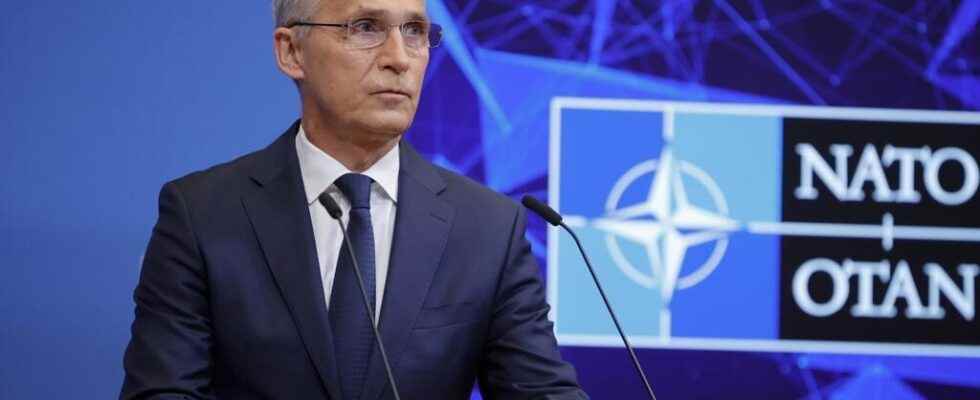Former Norwegian Prime Minister, admirer in his youth of Bob Dylan and Nelson Mandela, Jens Stoltenberg is at the head of an Alliance which has found a raison d’être thanks to the war in Ukraine. Supporter of massive aid to Ukraine, the former Norwegian Prime Minister also piloted the reinforcement in men and equipment of the eastern flank of NATO.
This is a message that he has constantly hammered home since February 24 and the start of the war in Ukraine: for Jens Stoltenberg, Russian aggression against its neighbor is aggression against Europe as a whole, and it is therefore imperative for NATO to strengthen itself. A message consistent with the shift initiated upon his arrival at the head of the Organization, in 2014, just after the annexation of Crimea by Russia.
” Jens Stoltenberg wanted an overhaul of the strategic concept of NATO”, analyzes Amélie Zima, NATO specialist at the Institute for Strategic Research of the Military School. Islefelt that we could no longer operate on the 2010 concept, the Lisbon concept, because NATO, at that time, had an expeditionary character, like in Afghanistan or Libya. In his eyes, it was necessary to stimulate reflection on doctrine and it was really he who presided over NATO’s conversion from expeditionary to territorial defence. »
► To read also: NATO in ten questions
A former pacifist at the head of NATO
Faced with the Russian threat, Jens Stoltenberg was able to maintain the unity of the Alliance and convince European countries to boost their military budgets. A paradoxical role for this former pacifist, who threw stones at the American embassy in Oslo when he was active in left-wing student organizations in the heart of the 1970s.
“He was born in 1959, so his youth was spent during the Cold War, at a time when the United States was above all the country fighting in Vietnam “recalls Louis Clerc, professor of contemporary history at the University of Turku, in Finland. ” These were years when the protests against the United States were important. But from the moment he became Minister of the Environment in 1990, then Minister of Finance in 1996, he became institutionalized and, like European social democracy, he increasingly became perhaps be conservative and attached to the European institutions, etc. »
Utoya’s Trauma
In the 2000s, Jens Stoltenberg became the central figure in Norwegian political life… A first time Prime Minister, in 2000, at the age of 41. Then a second time, from 2005 to 1013. But a tragic event will mark this second mandate: the double attack of the far right which killed 77 people on July 22, 2011, in Oslo and on the island of Utoya.
“ He managed to manage this and to unite the nation around this dramatic event, in particular by advocating dialogue and union. », stresses Franck Orban, professor of political science at the University College of Østfold, in Norway. ” And one could draw a parallel between this dramatic event for Norway and the war in Europe that returned with the invasion of Ukraine. Because, in this conflict, what does he do? He continues to create consensus, and to try to ensure that NATO countries come together on common positions. »
The invasion of Ukraine comes “at the right time” to revitalize the Atlantic Alliance, which suffered greatly during the second part of the 2010s. With the mandate of Donald Trump and the criticisms formulated by Emmanuel Macron in 2019, who accused NATO of being “brain dead”, it was still a difficult role to play within NATO. But he has been recognized as having a certain ability to overcome conflicts and create consensus. It is for this reason that he was reaffirmed in his role “, explains Franck Orban.
► To listen: Russia wanted to weaken NATO, it strengthened it. But how far?
An extended mandate
Jens Stoltenberg did not save NATO on his own, very far from it: it was above all Vladimir Putin who gave back its raison d’être to an organization that he nevertheless wanted to weaken. By invading Ukraine, the Russian President comforted all those who were alarmed by Russia’s expansionist desires, and who demanded a strengthening of the Alliance on its eastern flank.
And despite his art of compromise, Jens Stoltenberg has not always succeeded in overcoming the crises that marked his two terms as head of NATO. “ He could not avoid the chaos of the withdrawal from Afghanistan, observes Amélie Zima, from Inserm. And he couldn’t do anything either in the face of Turkey’s actions when it started to buy equipment. We must not forget that the Secretary General of NATO has a role of impetus and mediation, but that he is powerless in the event of an internal crisis, as with Turkey. »
Now 63, Jens Stoltenberg was to leave NATO at the start of the year to take over as head of the Norwegian Central Bank. But his mandate was extended for at least a year, due to the war in Ukraine. The member countries of NATO considered it crucial to keep the boss of the Atlantic Alliance in his post, at a time when the latter is going through the most serious crisis in its history.
